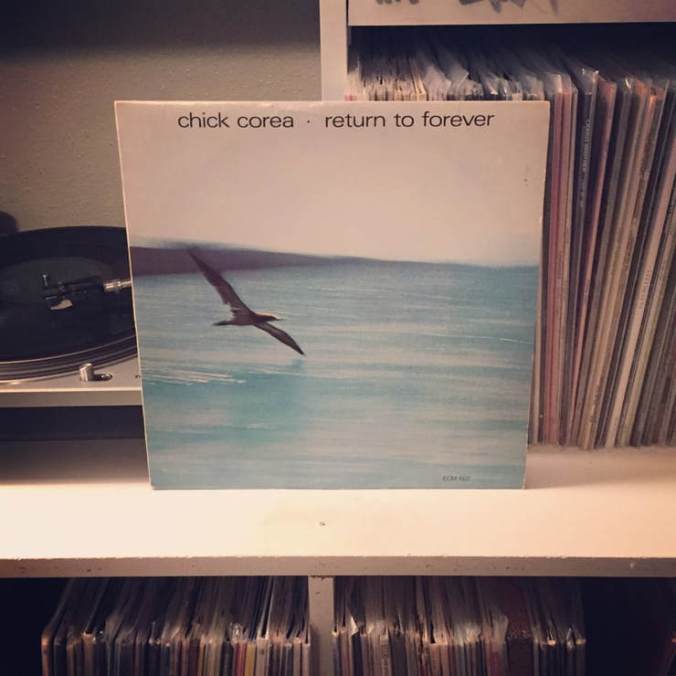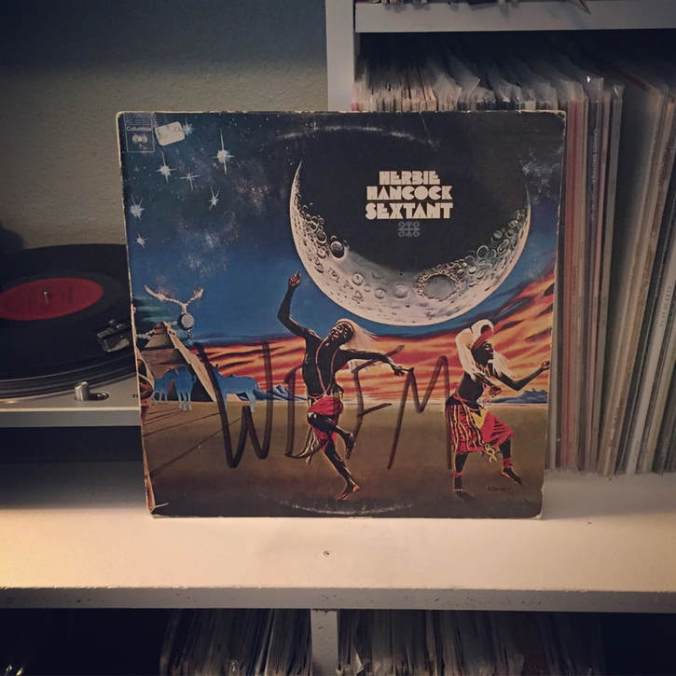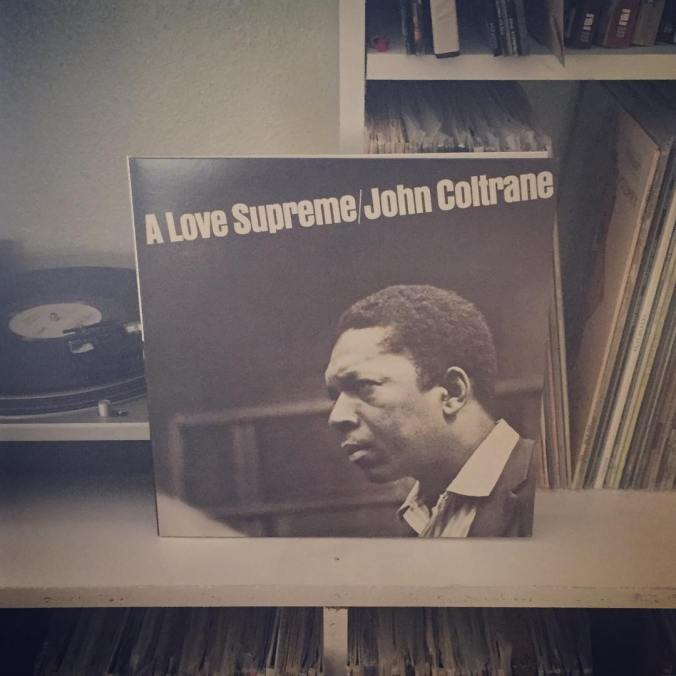 Throughout jazz history, there is perhaps no greater convergence of fiery experimentation and boundless talent than the players that made up Miles Davis’ band during his electric period.
Throughout jazz history, there is perhaps no greater convergence of fiery experimentation and boundless talent than the players that made up Miles Davis’ band during his electric period.
jazz
Record #512: Louis Armstrong – Hello, Dolly! (1964)

Miles Davis once said that the history of jazz could be told in four words: “Louis Armstrong, Charlie Parker.”
And while Satchmo’s contributions to jazz might have been far behind him in 1964, Hello, Dolly! would become his most commercially successful record.
Record #486: Larry Coryell – Spaces (1970)
 The interesting thing about jazz is that the albums are just as much about the side players as the bandleaders. And if you listen to enough jazz, you start to notice who the major players are.
The interesting thing about jazz is that the albums are just as much about the side players as the bandleaders. And if you listen to enough jazz, you start to notice who the major players are.
And while you might not readily recognize Larry Coryell’s name, you might recognize some of the people playing with him on Spaces.
Record #479: The Dave Brubeck Quartet – Time Out (1959)
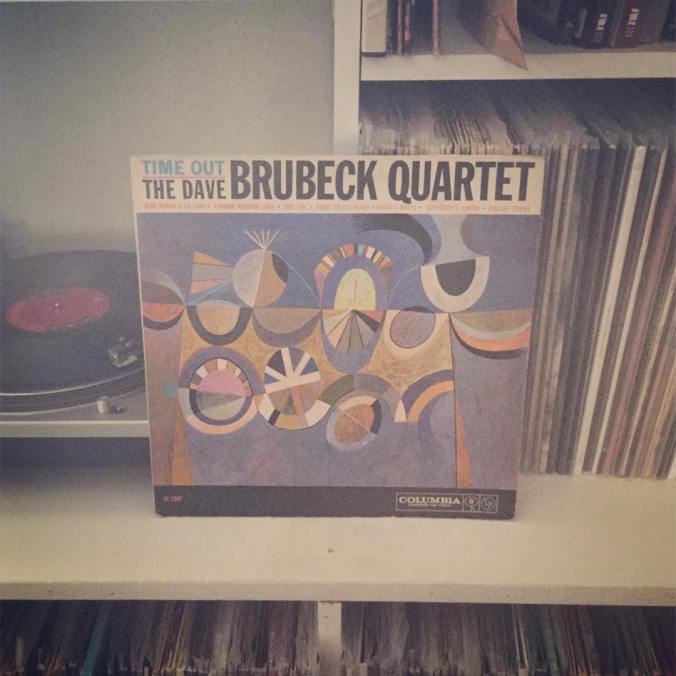
1959 was an incredible year for jazz.
Charles Mingus released Mingus Ah Um, John Coltrane released Giant Steps, Ornette Coleman released The Shape of Jazz to Come, and Miles Davis released Kind of Blue, which is perhaps the single most famous jazz record of all time (Coltrane was on that, too).
The year was so phenomenal that according to legend, Time Out was largely overlooked upon its release.
Record #453: Herbie Hancock – Crossings (1972)
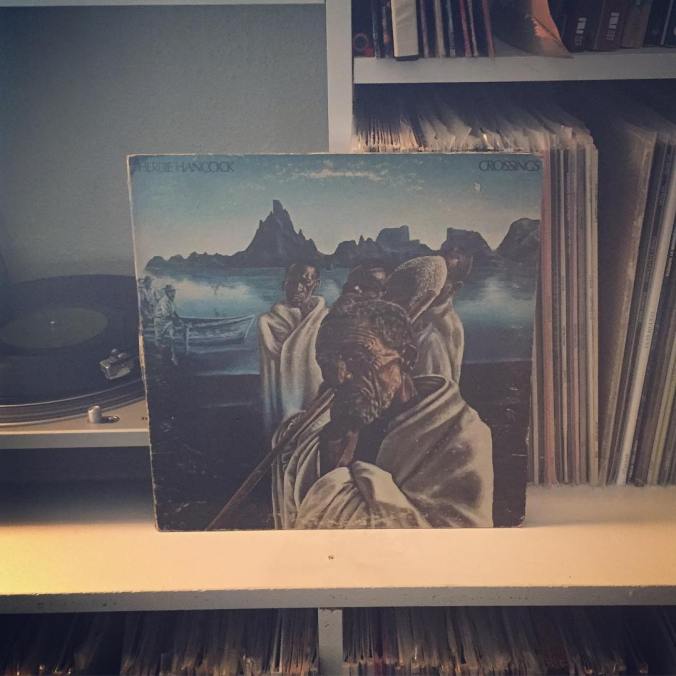
In the early 1970s, Miles Davis waged war against jazz traditionalism. His electric period, featuring the spaced out In a Silent Way and the manic Bitches Brew set a new course for the direction of jazz.
And through those years of fearless exploration and fierce iconoclasm, Herbie Hancock was right by his side.
Record #406: Chick Corea – Return to Forever (1972)
In the liner notes of this album, Chick says that Return to Forever (which was the group that performed this album, despite it being credit to Chick alone) was born out of a desire to reconnect his jazz explorations with the heart of emotional songwriting. He had gotten a bit lost in his own head, and wanted to put his soul back into music.
And for the most part, this hits that mark. Chick plays a Fender Rhodes throughout the session, without much effects trickery. There’s no shortage of experimental jazz weirdness, but there’s also a fair amount of Latin flair. Oh, and a pop song.
The opener, “Return to Forever” is an incredible, moody twelve-minute piece of space jazz with wordless vocals and a deep samba groove. “Crystal Silence” is an In a Silent Way-esque piece of ambience that finds Chick’s Rhodes accompanied only by Joe Ferrell’s woodwinds. “What Game Shall we Play Today?” is a delightful pop tune that sounds like could be on Sesame Street (note: that is not an insult!).
The closer, “Some Time Ago/La Fiesta” takes up the entirety of side B and manages to revisit every track before it. It opens with an obtuse, ambient section where bassist Stanley Clarke finally gets his day in the sun. It then transitions into a Latin-tinged pop song featuring Flora Purim’s enchanting vocals. After her verses, it becomes a much more aggressive flamenco inspired jam, that ends up nowhere near the place it began.
At times, it runs the risk of sounding dated, or even a little cheesy.
But it somehow transcends the signifiers of its era and manages to become truly timeless. While his contemporaries were getting lost in space or hitching their wagon’s to funk’s swagger, Corea took the road less traveled and made an album that is truly special.
Record #405: Herbie Hancock – Sextant (1973)
While you can hear his love for electric pianos on his work with Miles, his fascination with the boundless possibilities of synthesizers came to a head during his Mwandishi period. While all three of these records (Mwandishi and Crossings being the other two) saw Herbie and Co. pioneering digital landscapes with sheer animalistic delight, that ethos reached its pinnacle on Sextant.
The album opens with “Rain Dance,” a nine minute track that is almost as synth driven as a Kraftwerk tune. Drums are almost absent as the group lets a synthesizer take over on rhythm duties. It’s followed by “Hidden Shadows,” which I swear is a rearrangement of a tune from Miles Davis’ Live-Evil, but I can’t identify it. But it jaunts along with a wicked sounding voodoo funk that Herbie tries to defeat with the only acoustic piano on the record (spoiler alert: he does not defeat the voodoo).
Side B is a single twenty track (not unusual during this period) called “Hornets.” It’s a funky, spaced-out jam that sounds exactly like the cover looks. The band plays in an absolutely tribalistic abandon that sounds exactly how the cover looks. Herbie warps the settings on his tape delay. Bennie Maupin plays a friggin’ kazoo. Buster Williams runs his bass groove through every possible permutation. Billy Hart does all he can on the drums to keep the band from flying off into space. But for all of his effort, he fails: the song still ends up as the theme song for a rave on Mars.
While Herbie would go on to out-funk all the funk guys on Head Hunters, his Mwandishi period produced my undisputed favorite albums in his catalogue. And this record, even more untethered to traditional conventions of jazz, is as good as he gets.
Record #295: John Coltrane – A Love Supreme (1965)
There are two jazz albums that you’ll find even in the collections of non-jazz enthusiasts: Miles Davis’ Kind of Blue and John Coltrane’s A Love Supreme.
And it’s worth noting that Coltrane played on both…
And in the pinnacle of cool jazz, Coltrane was there filling the same role. His solos on Kind of Blue remain some of the most iconic saxophone lines in music history. And like Miles before him (and most of the Kind of Blue band, honestly), he quickly grew too large to remain under his bandleader’s shadow and made a name for himself.
Taking the same modal harmonies of cool jazz, Coltrane added a sort of manic energy to it. Where cool jazz’s drummers largely rode the beat, rising from the background only occasionally, Coltrane lit a fire under his rhythm section, pioneering what would be called hard bop, before going full tilt into free jazz.
Like Kind of Blue for Miles, A Love Supreme is Coltrane’s capital G Great record. It is for hard bop what Kind of Blue is for cool jazz. It is a monolith of immaculately played hard bop that reaches far beyond jazz’s typical sphere of influence.There are hints of frenetic free jazz he would go on to write, but A Love Supreme is intricately composed, returning to a small handful of motifs throughout the record (the sung “Love supreme” melody that opens the record also closes it, appearing a few times in the middle section).
In the liner notes, Coltrane writes a beautiful psalm dedicating the record to God, and the devotion is easy to hear. Each breath of the saxophone, each hammered piano chord, each drum fill, each sliding bass line is a devout act, an act of worship somewhere between bliss and toil.
Record #251: Count Basie – …Plays his Hits of the 60s (1966)
In the fall of 2004, I was a guitarist in an emo band that somehow made it onto my school’s advanced Jazz Band. The first sheet of music handed to me was “Basie Straight Ahead” (which is not on this album), and I quickly realized how in over my head I was. And it wasn’t just me–it took the entire band five months to be able to play the entire song through.
